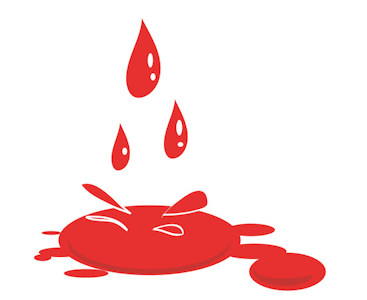Hemorrhoids Symptoms
 Bleeding while having a bowel movement, itching and rectal pain are the most common hemorrhoids symptoms. Having pain around the rectal area occurs mainly with external hemorrhoids. Blood may collect under the surface of the skin which forms hard, painful lumps or cushions. When this occurs it is called a thrombosed or clotted hemorrhoid. It is also quite common for an affected person to see blood on the toilet paper after straining to have a bowel movement. Blood can also be seen in the toilet.
Bleeding while having a bowel movement, itching and rectal pain are the most common hemorrhoids symptoms. Having pain around the rectal area occurs mainly with external hemorrhoids. Blood may collect under the surface of the skin which forms hard, painful lumps or cushions. When this occurs it is called a thrombosed or clotted hemorrhoid. It is also quite common for an affected person to see blood on the toilet paper after straining to have a bowel movement. Blood can also be seen in the toilet.
Concerning internal hemorrhoids, among the most common hemorrhoid symptoms is rectal bleeding. The blood will be bright red in color. Blood may also be visible on the stool itself. It is also common to feel an itching sensation with internal hemorrhoids. This is because mucous often seeps from internal hemorrhoids which is irritating to the skin. Another hemorrhoid symptom of the internal variety is having the feeling of needing to have another bowel movement right after passing stool. This is due to the fact that often the internal hemorrhoid is bulging in the end portion of the large intestine or anal canal. Generally speaking, the larger the hemorrhoid, the more discomfort one will feel. Having to strain hard while having a bowel movement can be indicative of hemorrhoids as can the expulsion of mucous when passing stool.
 More uncommon symptoms of hemorrhoids can include feeling pain while sitting. In this case, the external hemorrhoids are most likely quite large. Feeling one or more hard, tender lumps near the anus can also be experienced with larger external hemorrhoids. Having a constant urge to pass stool is a less common hemorrhoid symptom one can experience when external hemorrhoids are present.
More uncommon symptoms of hemorrhoids can include feeling pain while sitting. In this case, the external hemorrhoids are most likely quite large. Feeling one or more hard, tender lumps near the anus can also be experienced with larger external hemorrhoids. Having a constant urge to pass stool is a less common hemorrhoid symptom one can experience when external hemorrhoids are present.
Internal hemorrhoids are graded by the degree of prolapse. Prolapsed hemorrhoids are so distended that they become pushed out of the anus. In Grade I internal hemorrhoids, there is no prolapse present. In Grade II, a prolapse occurs when having a bowel movement but it spontaneously reduces upon passing stool. In Grade III, the prolapse can be reduced manually after defecating and in Grade IV, the prolapse is not able to be manually reduced and in many cases hemorrhoid removal is needed. In all grades, the hemorrhoids symptoms typically include the presence of bright red blood covering the stool, on the toilet paper or in the toilet bowel. The higher the grade the more complicated hemorrhoids treatment applies.
 If you have any of the above mentioned hemorrhoids symptoms, you should definitely consider seeing your doctor. The repeated presence of blood in the stool, on toilet paper or in the toilet bowel could be indicative of more serious health issues other than hemorrhoids such as colon cancer or cirrhosis of the liver. Symptoms of hemorrhoids should therefore never be ignored. Like with any other health-related issue you may have, it is always best to seek the professional advise of a healthcare professional if you have hemorrhoid symptoms.
If you have any of the above mentioned hemorrhoids symptoms, you should definitely consider seeing your doctor. The repeated presence of blood in the stool, on toilet paper or in the toilet bowel could be indicative of more serious health issues other than hemorrhoids such as colon cancer or cirrhosis of the liver. Symptoms of hemorrhoids should therefore never be ignored. Like with any other health-related issue you may have, it is always best to seek the professional advise of a healthcare professional if you have hemorrhoid symptoms.
